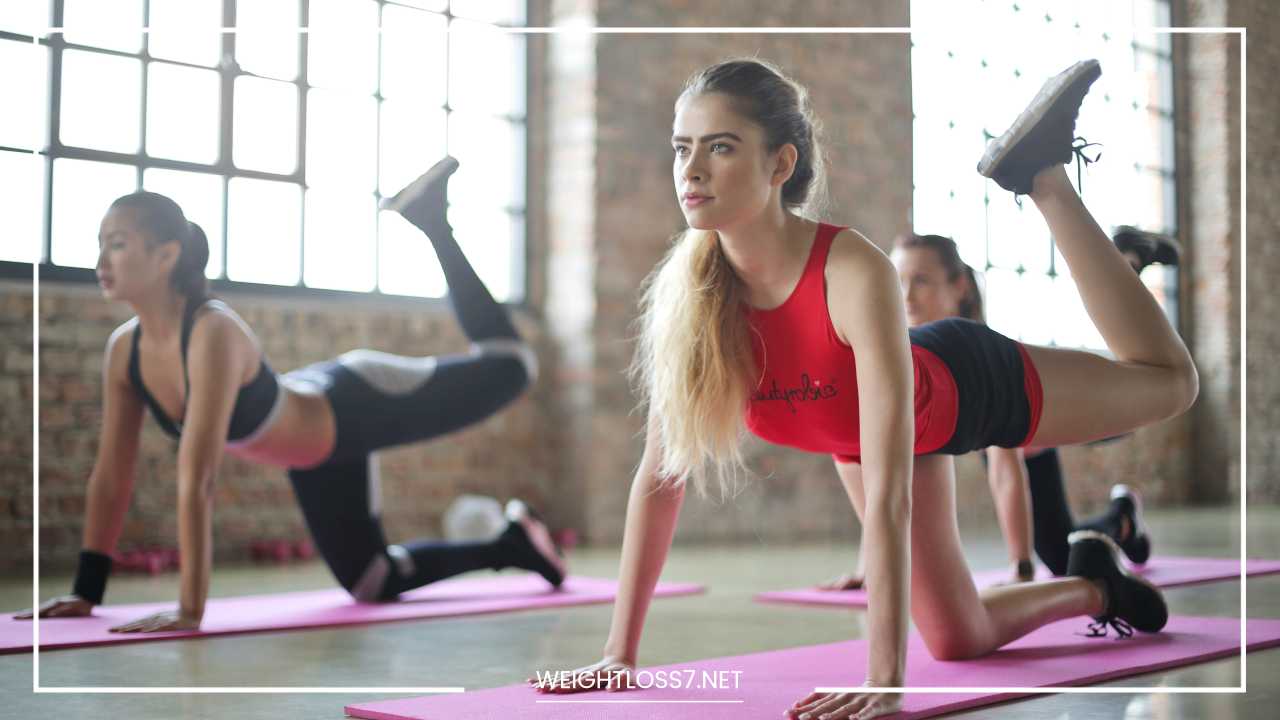How to Get Fit: The Fitness Tips You Never Knew You Needed

Fitness Tips
Fitness Tips: Your Guide to a Healthier, Happier You
Fitness. It’s a word that can conjure up images of chiseled abs, grueling workouts, and restrictive diets. But the truth is, fitness is for everyone.
It’s about feeling good, having energy, and taking care of your body. Whether you’re a seasoned gym rat or just starting your journey, there’s always room for improvement.
This blog post is your one-stop shop for fitness tips, covering everything from setting goals and finding the right workout to nutrition and staying motivated. We’ll delve deeper into each aspect, providing practical advice and actionable steps to get you moving.
Setting the Stage: Goals and Planning
The first step to any successful fitness journey is setting goals. What do you want to achieve? Do you want to lose weight, gain muscle, improve your cardiovascular health, or simply feel more energized? Having clear goals will help you tailor your workouts and stay focused.
SMART Goals for a Sustainable Journey:
Here, we’ll expand on the SMART goal concept:
- Specific: Instead of “get in shape,” aim for “run a 5K in 6 months” or “do 3 sets of 10 squats with proper form by the end of the month.”
- Measurable: Track your progress with a fitness tracker, app, journal, or by taking measurements like weight, body fat percentage, or circumference.
- Attainable: Set realistic goals that you can achieve. Start with small, achievable goals and gradually build on your successes.
- Relevant: Choose goals that matter to you and your overall health. Consider your lifestyle, preferences, and long-term health aspirations.
- Time-bound: Give yourself a deadline to reach your goal. This creates a sense of urgency and helps you stay on track.
Planning Your Fitness Journey:
Once you have your SMART goals, it’s time to create a plan. Here are some expanded tips:
- Choose activities you enjoy: This will make it more likely that you’ll stick with your workouts in the long run. Try different activities like dance classes, rock climbing, martial arts, or team sports to find what sparks joy.
- Schedule your workouts: Treat them like important appointments in your calendar. Block out dedicated time for exercise and stick to it as much as possible.
- Start slow and gradually increase intensity and duration: Don’t jump into intense workouts if you’re new to exercise. Begin with low-impact activities and gradually increase the difficulty as your fitness level improves. This helps prevent injuries and allows your body to adapt.
- Find a workout buddy or join a fitness class: Having someone to exercise with can be a great motivator. A workout buddy can provide support, accountability, and make exercise more social and enjoyable. Fitness classes can offer structured workouts, guidance from instructors, and a sense of community.
Finding Your Fitness Groove: A World of Exercise Options
There’s no one-size-fits-all approach to exercise. The key is to find activities you enjoy and that fit your lifestyle. Here’s a deeper dive into popular options:
-
Cardio:
- Benefits: Improves cardiovascular health, strengthens your heart and lungs, boosts endurance, and aids in weight management.
- Activities: Running, swimming, biking, dancing (Zumba, salsa), jumping rope, rowing, HIIT (High-Intensity Interval Training) workouts.
- Tips: Choose activities you find fun. Start with shorter durations and gradually increase as your fitness improves. Listen to upbeat music to stay motivated.
-
Strength Training:
- Benefits: Builds muscle mass, increases bone density, improves metabolism, strengthens functional movement patterns, and helps maintain a healthy weight.
- Activities: Bodyweight exercises (push-ups, squats, lunges, planks), free weights (dumbbells, barbells), weight machines, resistance bands.
- Tips: Focus on proper form to avoid injury. Start with lighter weights and gradually increase as you get stronger. Consider working with a personal trainer for guidance, especially if you’re new to strength training.
-
High-Intensity Interval Training (HIIT):
- Benefits: Provides a time-efficient workout, burns a significant amount of calories in a short period, improves cardiovascular health and metabolic rate.
- Activities: Sprints with walking or jogging recovery periods, jumping jacks with rest intervals, burpees with rest, alternating periods of high-intensity exercise with low-intensity recovery.
- Tips: HIIT can be intense, so ensure you’re in good overall health before starting. Begin with shorter intervals and gradually increase duration and intensity as your fitness improves. Listen to your body and take rest days when needed.
-
Team Sports:
- Benefits: Provides a social and fun way to exercise, promotes teamwork and communication skills, improves coordination and agility.
- Activities: Basketball, soccer, volleyball, tennis, badminton, joining a recreational league or team.
- Tips: Choose a sport you enjoy or are curious about trying. Many leagues offer beginner divisions for those new to the sport. Team sports can be a great way to meet new people and have fun while getting active.
-
Yoga and Pilates:
- Benefits: Improves flexibility, core strength, balance, posture, and body awareness. Can also help reduce stress and anxiety.
- Activities: Hatha yoga, Vinyasa yoga, Yin yoga, Iyengar yoga, Pilates mat classes, Pilates reformer classes.
- Tips: There are different types of yoga and Pilates, so research and find a class that suits your fitness level and interests. Many studios offer beginner-friendly classes. Yoga and Pilates can be a great way to improve your mind-body connection and unwind after a long day.
Fueling Your Fitness: The Power of Nutrition
Diet plays a crucial role in fitness. What you eat impacts your energy levels, recovery, and overall health. Here are some key nutrition tips, along with additional details:
-
Eat a balanced diet: Include plenty of fruits, vegetables, and whole grains for essential vitamins, minerals, and fiber. Choose lean protein sources like chicken, fish, beans, lentils, and tofu to build and repair muscle tissue. Healthy fats from sources like avocados, nuts, and seeds provide sustained energy and support hormone health.
-
Stay hydrated: Water is essential for all bodily functions, including regulating body temperature, transporting nutrients, and lubricating joints. Aim to drink plenty of water throughout the day, especially before, during, and after workouts.
-
Limit processed foods, sugary drinks, and unhealthy fats: These foods are often high in calories, unhealthy fats, added sugars, and sodium, which can contribute to weight gain, inflammation, and other health problems. Focus on whole, unprocessed foods for optimal health and performance.
-
Don’t skip meals: Aim for regular meals and snacks throughout the day to keep your metabolism going and provide your body with the energy it needs for exercise and daily activities. Skipping meals can lead to overeating later and can negatively impact your energy levels.
-
Find healthy recipes: Explore cookbooks, websites, or recipe apps for delicious and nutritious meals that fit your dietary needs and preferences. There are many healthy recipes available that are quick and easy to prepare, even for busy lifestyles.
Staying Motivated: It’s a Marathon, Not a Sprint
Let’s be honest, staying motivated is a challenge. Here are some expanded tips to keep you going on your fitness journey:
-
Find a workout buddy or join a fitness class: Having someone to exercise with can be a great motivator, providing support, accountability, and making workouts more social and enjoyable. Fitness classes offer structured workouts, guidance from instructors, and a sense of community, which can all contribute to motivation.
-
Track your progress: Seeing how far you’ve come can be a powerful motivator. There are many ways to track progress, including using a fitness tracker, app, or journal to record workout details, weight, measurements, or how you’re feeling. Celebrate your milestones, big or small, to stay motivated.
-
Reward yourself for reaching milestones: Set achievable goals and reward yourself for reaching them. This could be anything from a new workout outfit to a relaxing massage or a night out with friends. Rewarding yourself helps reinforce positive behavior and keeps you motivated to continue on your fitness journey.
-
Mix up your workouts to avoid boredom: Doing the same workout routine every day can become monotonous. Try different activities, explore new variations of exercises, or take a group fitness class to keep things interesting. This will help you stay challenged and prevent plateaus in your progress.
-
Listen to your body: It’s important to take rest days when needed to allow your body to recover from exercise. Pushing yourself too hard can lead to injuries and burnout. Pay attention to your body’s signals and adjust your workout intensity or duration accordingly.
-
Focus on how exercise makes you feel: Celebrate the extra energy, improved mood, better sleep, and overall sense of well-being that comes with a regular workout routine. When you focus on the positive benefits of exercise, it becomes more enjoyable and sustainable in the long run.
Beyond the Physical: The Mind-Body Connection
Fitness isn’t just about physical health. It also benefits your mental and emotional well-being. Here’s a deeper look at the mind-body connection:
-
Exercise reduces stress and anxiety: Physical activity releases endorphins, hormones that have mood-boosting and pain-relieving effects. Exercise can also be a form of stress relief, allowing you to clear your head and focus on the present moment.
-
Improves mood and combats depression: Regular exercise has been shown to be effective in improving mood and reducing symptoms of depression. Exercise can help increase feelings of self-confidence and self-esteem, and provide a sense of accomplishment.
-
Boosts cognitive function: Studies suggest that exercise can improve cognitive function, memory, focus, and concentration. Physical activity can help increase blood flow to the brain, which is essential for optimal cognitive performance.
-
Promotes better sleep: Regular exercise can improve sleep quality, leading to deeper, more restful sleep. Exercise can help you fall asleep faster and stay asleep longer.
Remember:
-
It’s a journey, not a destination: Don’t get discouraged by setbacks. Everyone experiences setbacks on their fitness journey. The key is to learn from them, get back on track, and keep moving forward.
-
Celebrate all your victories: Big or small, acknowledge your progress. Celebrate reaching milestones, completing a challenging workout, or simply sticking with your routine. Taking the time to celebrate your accomplishments will help you stay motivated on your fitness journey.
-
Focus on progress, not perfection: There will be good days and bad days. That’s okay! Focus on making progress over time, not achieving perfection. Every workout, every healthy meal choice, is a step in the right direction.
Taking the First Step: Putting It All Together
Ready to start your fitness journey? Here are some actionable steps to get you moving:
-
Talk to your doctor: Get clearance before starting a new exercise program, especially if you have any health concerns. A doctor can help you determine a safe and effective exercise plan for your individual needs.
-
Do some research: Find activities you enjoy. There are many resources available online and in libraries to help you learn about different types of exercise and find activities that fit your interests and fitness level.
-
Set SMART goals: Determine what you want to achieve with your fitness journey. Setting SMART goals will provide direction and keep you focused.
-
Create a workout plan: Schedule your workouts in your calendar and choose activities that you enjoy. Start slow and gradually increase intensity and duration as your fitness improves.
-
Find a support system: Having a workout buddy or joining a fitness class can provide motivation and accountability.
-
Fuel your body with healthy foods: Eat a balanced diet that includes plenty of fruits, vegetables, whole grains, and lean protein sources. Stay hydrated by drinking plenty of water throughout the day.
-
Listen to your body: Take rest days when needed and pay attention to your body’s signals. Don’t push yourself too hard, as this can lead to injuries.
-
Focus on the positive: Celebrate the benefits of exercise, such as increased energy, improved mood, and better sleep.
Final Word: A Fitter, Healthier You
Fitness is a lifelong journey, and it’s never too late to start. By following the tips in this blog post, you can take control of your health and well-being.
Remember, it’s about progress, not perfection. Make small changes, celebrate your victories, and enjoy the process of becoming a healthier, happier you.

















